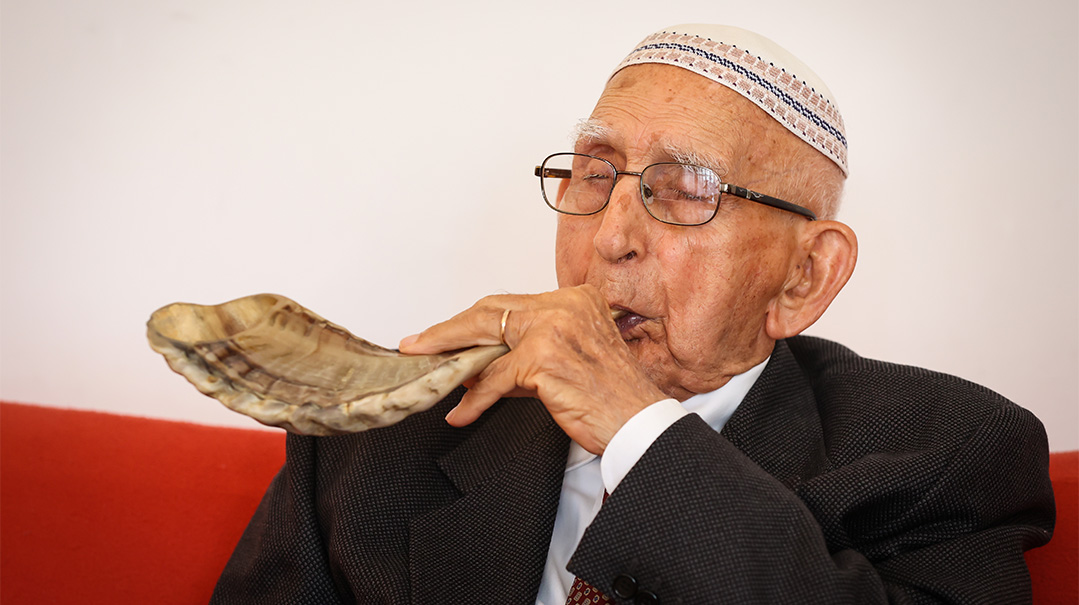Blast from the Past
| September 13, 2022At 101, Yaakov Aharoni is the last surviving shofar blower of an era when sounding the shofar at the Western Wall meant almost certain incarceration by the British

Photos: Itzik Blinitsky
IN the late 1920s, the local Arabs had begun rumbling about how blowing the shofar at the Western Wall was an insult to Islam, and by 1930, the legislative authority of the British Mandatory government stipulated that the Moslems’ ownership rights to the Temple Mount also encompassed the Kosel area (which at the time was just a few meters wide, pushing up against Arab houses). As a result, Jews were banned from blowing the shofar at the Wall, even on Rosh Hashanah and Yom Kippur.
The ban was an outrage, even to the most pacifist Jews of the Old Yishuv, and from the first Yom Kippur in 1930, when Lubavitcher chassid Rabbi Moshe Segal hid a shofar under his tallis and blew the tekiah gedolah, the shofar was actually blown every year until 1948, smuggled in by intrepid young men who would be beaten and arrested in the aftermath.
It was a real technical challenge as well, as large numbers of British policemen were stationed along the routes to the Kosel and conducted thorough searches of the Jews heading toward the Wall. The boys, who figured out creative ways to smuggle in the shofar, worked in teams of three so if one was caught, the others still had a chance — although it would usually mean spending at least a night, and up to six months, in the Kishleh, the Turkish-era police building and prison that’s still at the entrance to the Old City.
But that didn’t deter them. “This was about the lifeblood of the Jewish people,” says centenarian Yaakov “Sika” Aharoni, who blew the shofar at the Kosel in 1936 when he was 17.
About ten years ago, the six still-living shofar-blowers were located and were brought together — with wheelchairs and walkers — for a reunion at the Kosel, organized by the Toldot Yisrael historical society. “People can’t imagine it today, but as soon as we blew the shofar, the commotion started,” Avraham Elkayam a”h, who blew the shofar in 1947 at age 13, told the organizers. “The British started beating people with clubs.”
In June 1967, as the IDF miraculously routed the Jordanian legion, liberating the Kosel and reuniting the Old City with the rest of Jerusalem, Avraham Elkayam, a reserve soldier then, was fighting in the area and quickly made his way to the Kosel. There he saw an emotional rabbi in his sixties, standing by the Kosel that had been in Jordanian hands for 19 years, blowing a shofar, and Avraham asked him if he might have a turn as well. Avraham explained to the rabbi that he was the last person to sound the shofar at the Kosel before it was wrenched away, and it would mean a lot to him. The rabbi handed Avraham the shofar and hugged him, telling him that he, in fact, had been the first — it was Rabbi Moshe Segal, who started the tradition back in 1930.
Oops! We could not locate your form.







